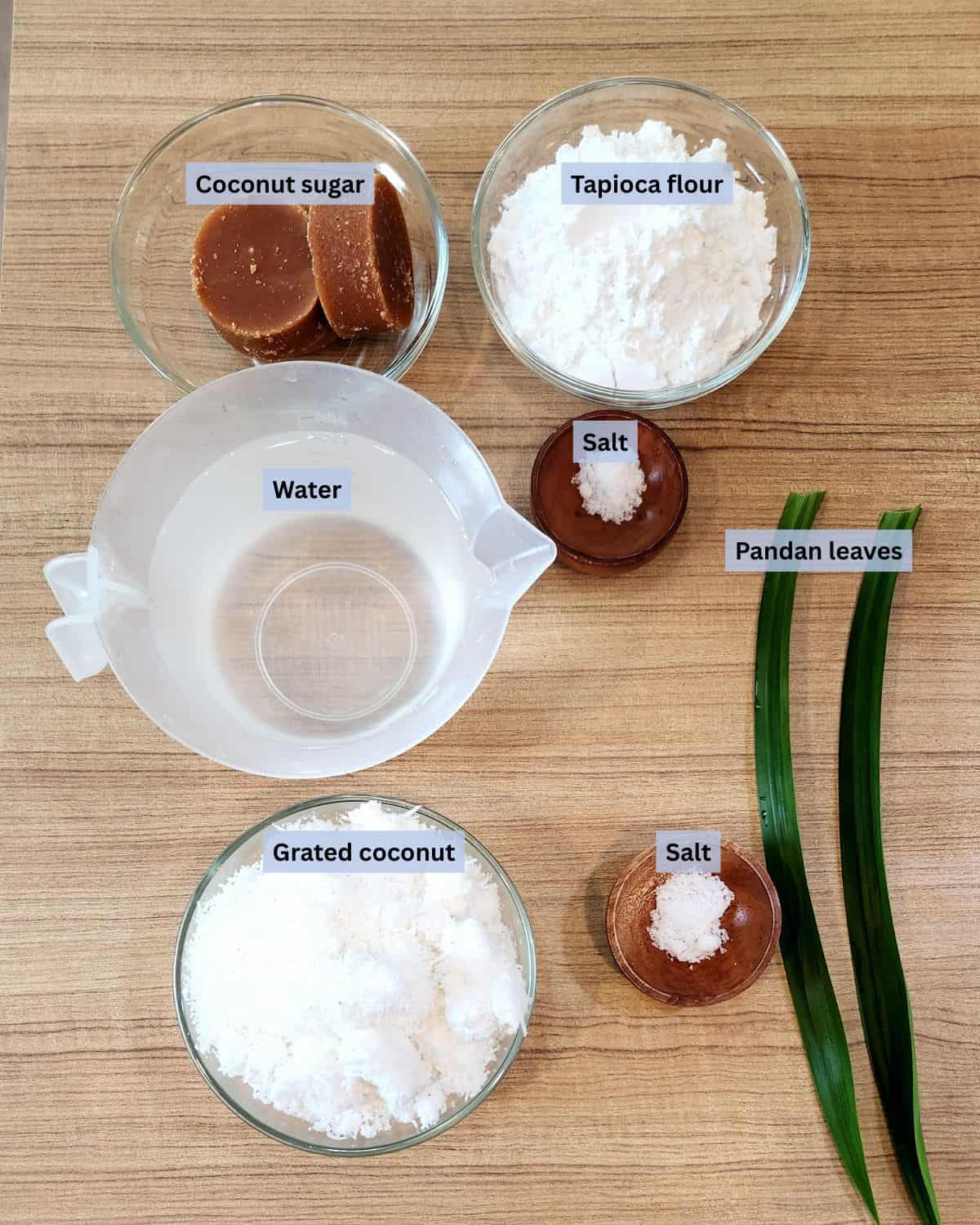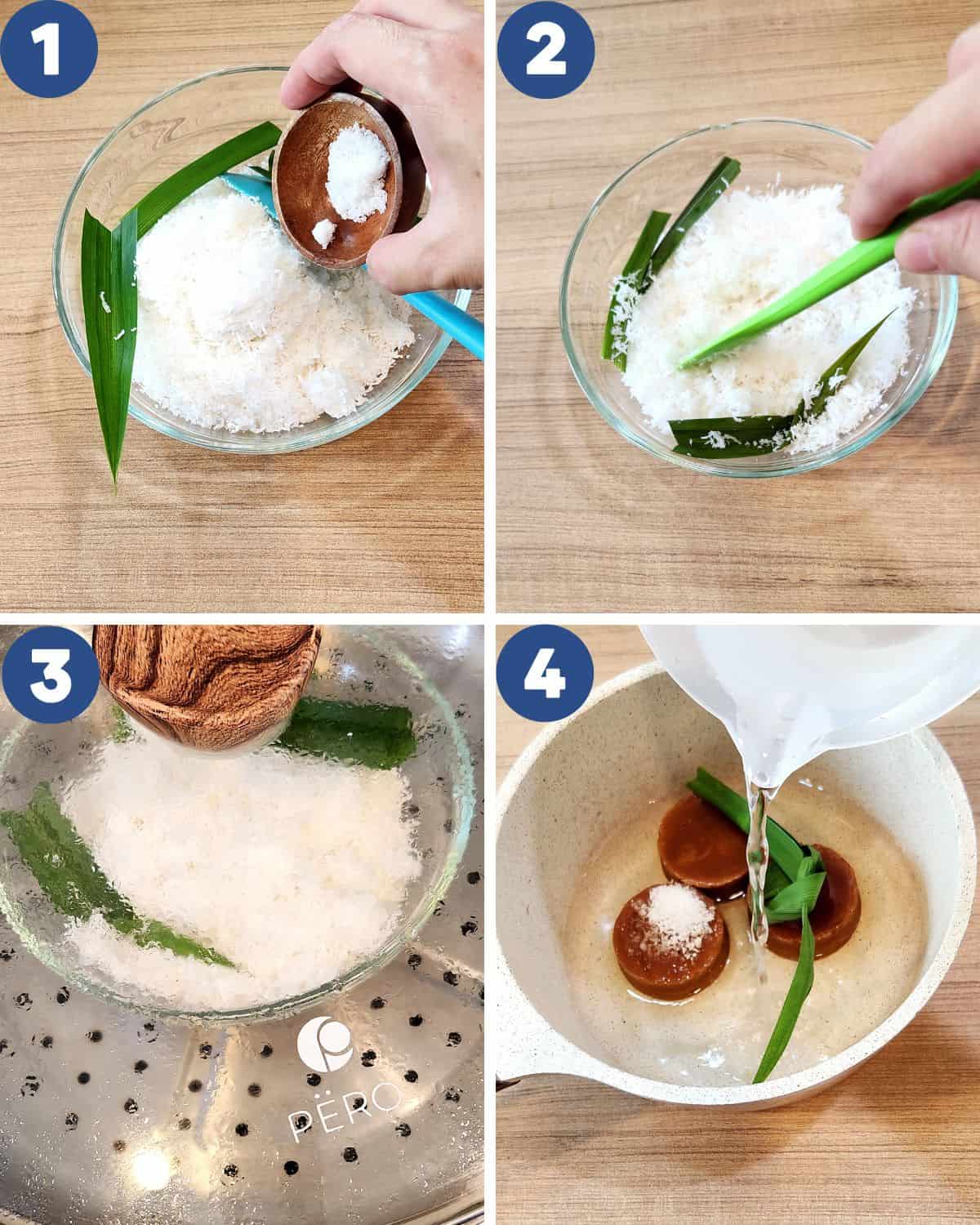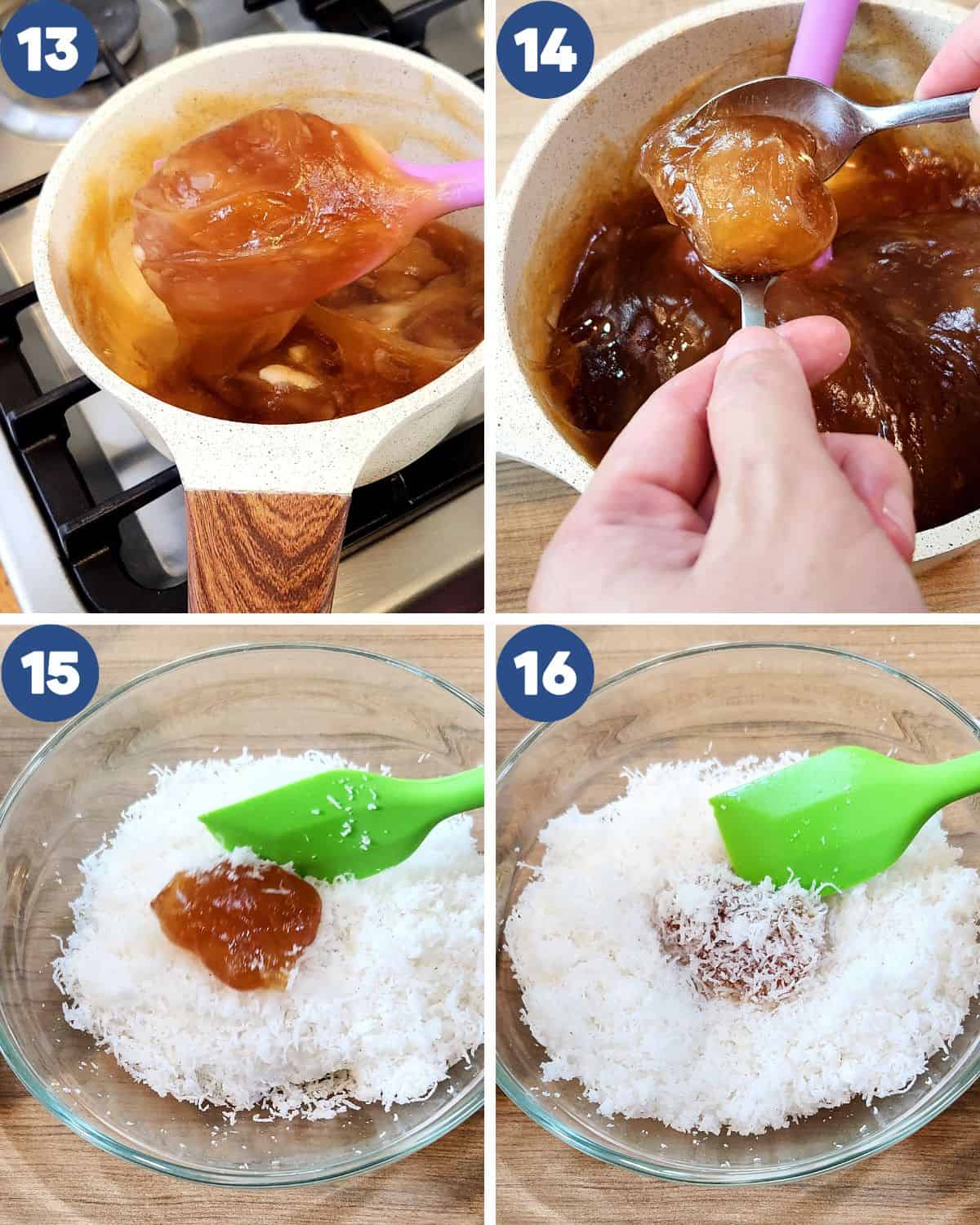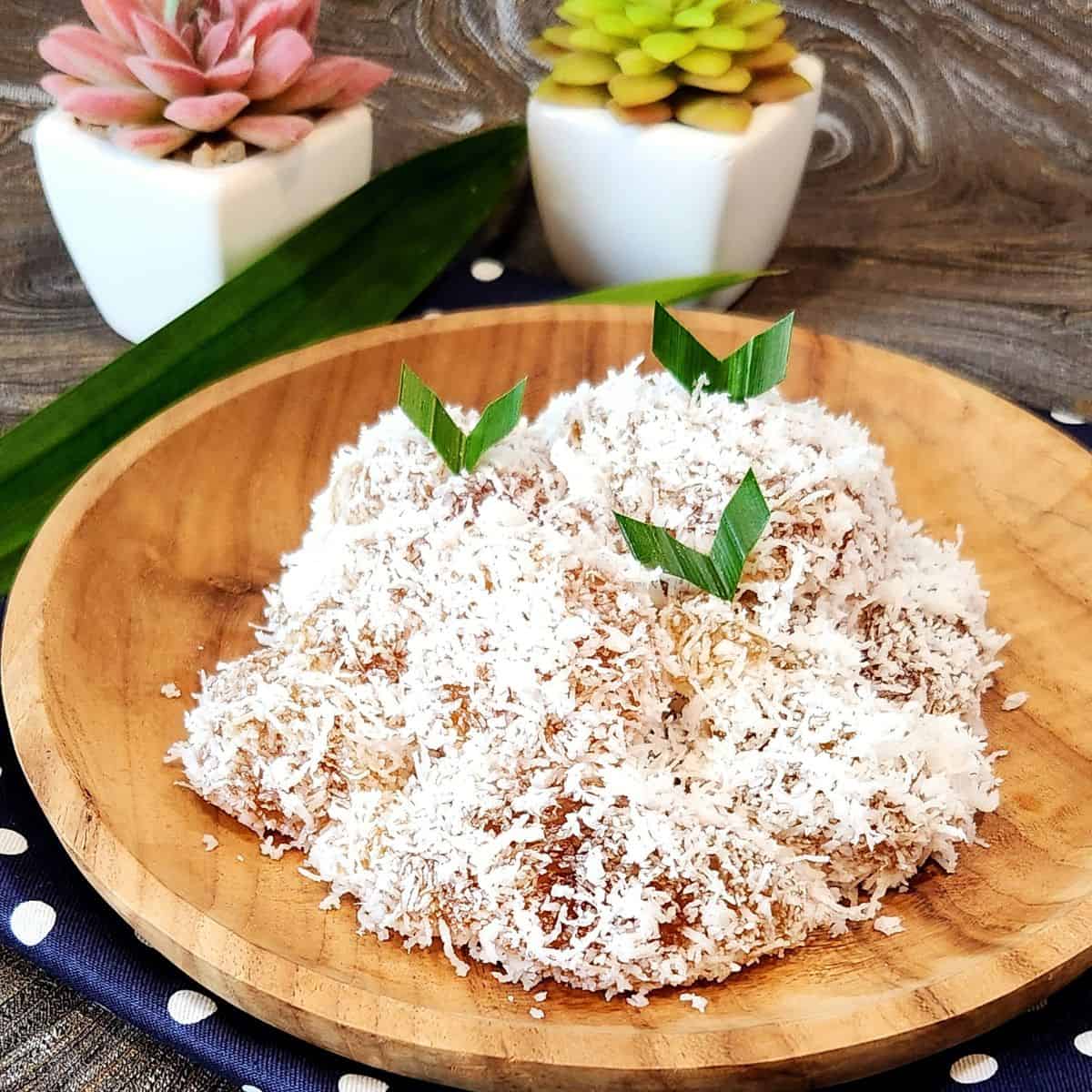Ongol ongol: Traditional Indonesian Dessert
Ever heard of Ongol ongol? This wobbly, coconut-covered Indonesian treat is like a sweet little hug for your afternoon dessert! Made from simple stuff like coconut sugar and tapioca flour, it’s chewy, slightly sweet, and totally addictive. Whipping it up at home is so much easier than you think!

Indonesia has a huge collection of desserts made with tapioca flour, coconut sugar, and shredded coconut—and ongol-ongol is one of its simplest yet most loved creations. With its soft, jiggly texture (think Turkish delight’s bouncy cousin), this treat proves that traditional sweets can be both magical and easy to make.
If you’re a fan of Klepon or Onde Onde (those addictive green rice balls oozing with palm sugar), Gethuk (fluffy cassava cake), or Bugis Mandi (chewy tapioca dumplings filled with coconut and palm sugar), then Ongol ongol will feel like the playful sibling in Indonesia’s dessert family.
And let’s be real—Indonesia’s sweet game is unbeatable. From the cozy warmth of Bubur Pulut Hitam (black glutinous rice porridge) to the charming simplicity of Kue Lumpang (steamed pandan bouncy cakes), there’s always space for this cute dessert on the table. So why not give it a try? One bite, and you’ll be hooked!
Why You Will Love This Recipe
Recipe Ingredients

Ingredient Notes
Coconut sugar – If you can find Asian grocery store, you might find coconut sugar. You can substitute with palm sugar if there isn’t any.
Be sure to check out the full recipe and ingredient list below
Substitutions & Variations
For a fun twist, try adding pandan extract to the batter for a vibrant green color and floral aroma. Just swap the coconut sugar for white sugar to let the pandan flavor shine through.
Want something blue? Steep butterfly pea flowers in hot water and use the infused liquid in your batter. Like with pandan, you’ll want to use white sugar here to keep the colors bright and flavors balanced.
How to Make Ongol Ongol

STEP 1. Mix salt into the grated coconut (Image 1). Mix thoroughly (Image 2). Steam with pandan leaves for 15 minutes (Image 3). Let it cool, then set aside. Combine coconut sugar, salt, and pandan in a sauce pan . Pour in the water (Image 4).

STEP 2. Turn on the stove low to medium heat (Image 5). Let the sugar dissolve and simmer (Image 6). Turn off the stove. Strain the sugar to take out any debris (Image 7). Let the sugar water cool down (Image 8).

STEP 3. Once the syrup has cooled down, mix in tapioca flour (Image 9). Stir with spatula until the tapioca flour dissolves completely (Image 10). Put on the stove, cook low heat (Image 11). Keep stirring, do not leave it unattended. It will become lumpy and sticky fast (Image 12).

STEP 4. Keep on cooking until you can see the bottom of the pan and it looks no longer sticky to the pan (Image 13). Move it to a greased bowl to cool down. Use 2 small spoons greased with oil and shape the gooey mixture into a ball, transfer it in a bowl of steamed shredded coconut (Images 14, 15). Let it be covered with coconut completely (Image 16). Continue until finished. Enjoy!
Pro Tips
- You can separate the water. Pour half into the sugar and the other half mix with tapioca flour. This way you save some time.
- If you can’t find fresh grated coconut, desiccated coconut works as a substitute—just steam it for 15 minutes to bring back some moisture and softness.
- No coconut sugar on hand? Brown sugar or palm sugar will do the trick. The flavor will vary slightly (coconut sugar has a uniquely fragrant, caramel-like aroma), but the results will still be delicious!
How to Serve
Plate these jiggly desserts on banana leaves for an authentic traditional look or pile them into small bowls for easy snacking.
This dessert is just perfect after a party of traditional Indonesian food full of spices and herbs like Chicken Rendang, the comforting Soto Betawi, or Soto Tangkar.
Pair it with a glass of warm Red Ginger Tea or Lemongrass Pandan Tea to balance its sweetness. Serve it alongside Kue Lapis Legit, Ontbijtkoek or other traditional Indonesian desserts like crispy Gemblong, sticky Wajik, fluffy Pandan Serabi, and the sweet-savory Lemper Ayam.
FAQs about Ongol ongol
Original version of this jiggly dessert primarily has a sweet caramel-like and coconutty flavor, often accompanied by a subtle fragrance from pandan leaves.
Yes, it is vegan-friendly as it usually consists of plant-based ingredients like coconut, sugar, and tapioca flour.
No—tapioca flour is essential for the signature jiggle! Regular flour will make it dense. For gluten-free alternatives, try arrowroot flour or sago flour instead.
Other Indonesian desserts that are similar to this dessert are: Kue Lumpang, Klepon, Kue Apem.
Steaming will give dried coconut moisture and softness, mimicking freshly grated coconut’s texture. If you skip this, the coconut will be dry.
Storage
Homemade ongol-ongol lasts 1-2 days at room temperature or 3-4 days refrigerated in an airtight container. For best texture, keep it lightly covered with steamed coconut to prevent drying. Note: I highly recommend you eat it fresh!
More Recipes Using Coconut

Ongol Ongol
Ingredients
- 150 gr tapioca flour
- 150 gr coconut sugar
- ½ tsp salt
- 3 pcs pandan leaves
- 550 ml water
- 150 gr grated coconut
- ½ tsp salt
Instructions
- Mix salt into the grated coconut. Mix thoroughly. Steam with pandan leaves for 15 minutes. Let it cool, then set aside. Combine coconut sugar, salt, and pandan in a sauce pan . Pour in the water.
- Turn on the stove low to medium heat. Let the sugar dissolve and simmer. Turn off the stove. Strain the sugar to take out any debris. Let the sugar water cool down.
- Once the syrup has cooled down, mix in tapioca flour. Stir with spatula until the tapioca flour dissolves completely. Put on the stove, cook low heat. Keep stirring, do not leave it unattended. It will become lumpy and sticky fast.
- Keep on cooking until you can see the bottom of the pan and it looks no longer sticky to the pan. Move it to a greased bowl to cool down. Use 2 small spoons greased with oil and shape the gooey mixture into a ball, transfer it in a bowl of steamed shredded coconut. Let it be covered with coconut completely. Continue until finished. Enjoy!
Video
Notes
- You can separate the water. Pour half into the sugar and the other half mix with tapioca flour. This way you save some time.
- If you can’t find fresh grated coconut, desiccated coconut works as a substitute—just steam it for 15 minutes to bring back some moisture and softness.
- No coconut sugar on hand? Brown sugar or palm sugar will do the trick. The flavor will vary slightly (coconut sugar has a uniquely fragrant, caramel-like aroma), but the results will still be delicious!







This is really the easiest traditional Indonesian dessert I have ever made! And the result is so satisfying. The soft, jiggly caramel-like texture covered with coconut. They are just delicious!